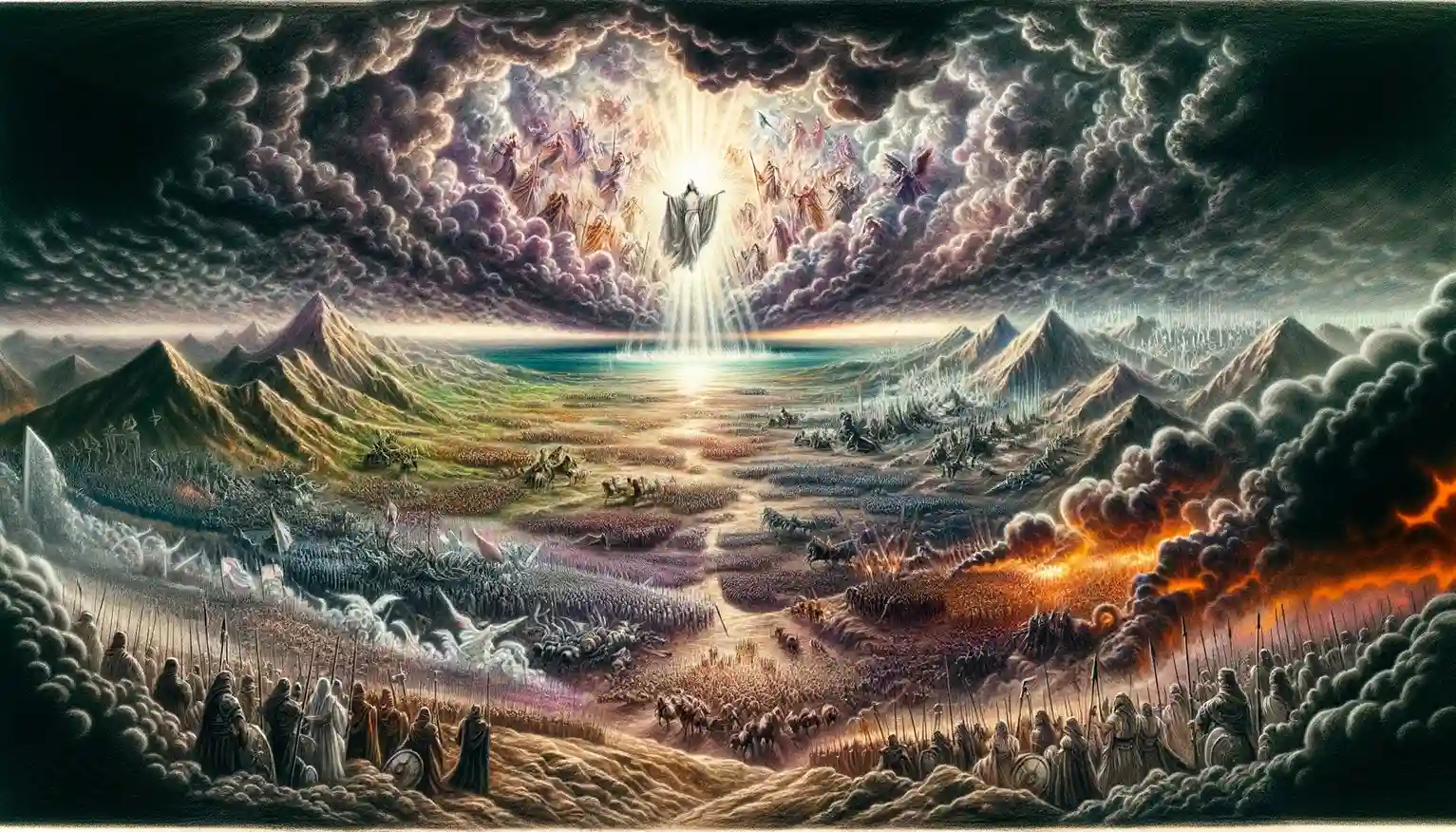
The Battle of Armageddon
The Battle of Armageddon, referred to in Revelation 16:16, is a prophetic and symbolic depiction of the ultimate confrontation between the forces of good and evil.
- Scriptural Reference – Revelation 16:16 mentions Armageddon briefly: “And they assembled them at the place that in Hebrew is called Armageddon.”
- Location – Armageddon is believed to be derived from the Hebrew word “Har Megiddo,” which means “Mount Megiddo.” Megiddo is an actual place in Israel, known for its strategic importance and historical battles.
- Context in Revelation – This reference occurs during the pouring out of the seventh bowl of God’s wrath, which is part of a series of judgments that affect the earth in the end times.
- Symbolic Significance – Armageddon is symbolically significant in Christian eschatology as the site of the final battle between God’s forces, led by Jesus Christ, and the forces of evil, including the Antichrist and his followers.
- Eschatological Implications – The battle signifies the ultimate victory of good over evil, leading to the destruction of the Antichrist and the establishment of God’s kingdom on earth as depicted in subsequent chapters of Revelation.
Contextual Background
The Battle of Armageddon is mentioned in the Book of Revelation, a New Testament text that contains apocalyptic prophecies. The mention of Armageddon in Revelation 16:16 is brief but significant, occurring during the sequence of the seven bowls of God’s wrath being poured out upon the earth, which represents the final series of judgments before the end of the world.
Theological Insights
- Symbolic Representation
- Armageddon is typically interpreted as the ultimate battleground between the forces of God and the forces of evil. The term “Armageddon” itself, derived from “Har Megiddo,” points to a geographical location in Israel known for numerous historical battles. However, in Revelation, it takes on a symbolic dimension that transcends a mere physical location.
- Eschatological Significance
- The battle signifies the climax of human history where evil is finally confronted and overcome. This event is pivotal in eschatological narratives, representing the moment when God’s justice is manifest, leading to the defeat of the Antichrist and the false prophet as described in later texts.
- Divine Sovereignty
- The assembly of kings and their armies at Armageddon is depicted as being guided by divine intervention, suggesting that even the forces of evil are under God’s sovereign control. This is indicated by the spirits of demons performing signs and gathering the kings of the whole world for battle on the great day of God Almighty (Revelation 16:14).
- Christ’s Victory
- Revelation portrays Jesus Christ as the divine warrior who leads the heavenly armies into battle. His victory at Armageddon is not just a military triumph but a definitive establishment of His kingdom and the restoration of divine order, fulfilling numerous Old Testament prophecies about God’s ultimate victory over evil.
Cultural and Historical Impact
- Prophetic Interpretations: Throughout Christian history, interpretations of Armageddon have varied widely, influencing theological and popular views on how the end times will unfold. These interpretations often reflect broader existential concerns about evil and justice in the world.
- Influence on Literature and Culture: The concept of Armageddon has permeated Western culture, often used metaphorically to describe any final battle or conflict on a massive scale. It has been featured in literature, film, and music, sometimes stripped of its biblical context but retaining its connotations of an epic final showdown.
- Theological Debates: The Battle of Armageddon has been a focal point for eschatological debates among various Christian denominations. Premillennialists, for example, emphasize a literal future battle, whereas amillennialists and postmillennialists might interpret it more symbolically or allegorically.
Conclusion
The Battle of Armageddon, as depicted in Revelation 16:16, encapsulates themes of divine judgment, the final confrontation between good and evil, and the triumph of Christ. It stands as a profound symbol of hope for believers, promising the eradication of evil and the establishment of eternal peace under God’s reign. The enduring impact of this prophecy reflects its deep resonance with human hopes for divine justice and redemption.



